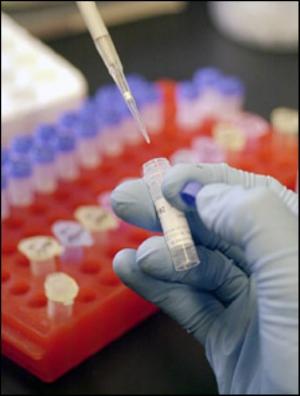New method to reveal pancreatic stem cells unveiled
 Washington, April 7: Mario Capecchi, Nobel Laureate for Medicine in 2007, has announced the invention of a technique to reveal the stem cells camouflaged in the pancreas.
Washington, April 7: Mario Capecchi, Nobel Laureate for Medicine in 2007, has announced the invention of a technique to reveal the stem cells camouflaged in the pancreas.
The achievement made in collaboration with Eugenio Sangiorgi, a researcher from the Catholic University of Rome, is important because, to date, scientists don''t have a method to distinguish a priori between a stem cell and any other cell in the same tissue.
“We can only infer that a cell really is a stem cell by observing its behaviour," says Sangiorgi.
Successful life saving transplants came to take place because scientists have discovered from where they can get stem cells in some cases, but they doubted the presence of such special cells in the pancreas until some years ago.
"Together with Professor Capecchi, we had already designed in the past a novel way to mark the stem cells in a tissue: a sort of little flag, capable of helping us to effectively label the cells we were looking for," says Sangiorgi.
For achieving this, the researchers used a molecular switch, that is a piece of DNA, which activates itself once the mouse under scrutiny takes a special drug.
When the switch was "on", a special fluorescent protein was produced. The luminous cells were indeed the long-sought stem cells.
"In order to understand that these are really stem cells, we need only to wait. A normal cell is sooner or later destined to die. A stem cell, instead, retains its capacity to renew itself and replicate. Thus, if we can still observe, many months later, that a cell is still alive, that means it is indeed a stem cell – or a cell derived directly from the division of a stem cell," says Sangiorgi.
Using their technique, the research team have shown that a particular subset of the pancreatic cells, the so-called acinar cells, are indeed stem cells.
These cells also produce important digestive enzymes, say the researchers.
"So far, a stem cell was really looked upon as a sort of General, in charge of all the other cells, but really doing nothing: an undifferentiated cell, but with no specific task other than generating new tissue. Acinar cells, on the other hand, despite being proved stem cells, have a well defined task in the pancreas. They are like soldiers doing their job, but also capable – when necessary – of taking over the reins of the government," says Sangiorgi.
Capecchi and Sangiorgi believe that their work may lead to an extension of the definition of the stem cell, which will lead to a more detailed study on the proliferation mechanisms at the root of the success of these cells, and of their potential danger.
A research article on their work has been published in the Proceedings of the National Accademy of Sciences (PNAS). (ANI)